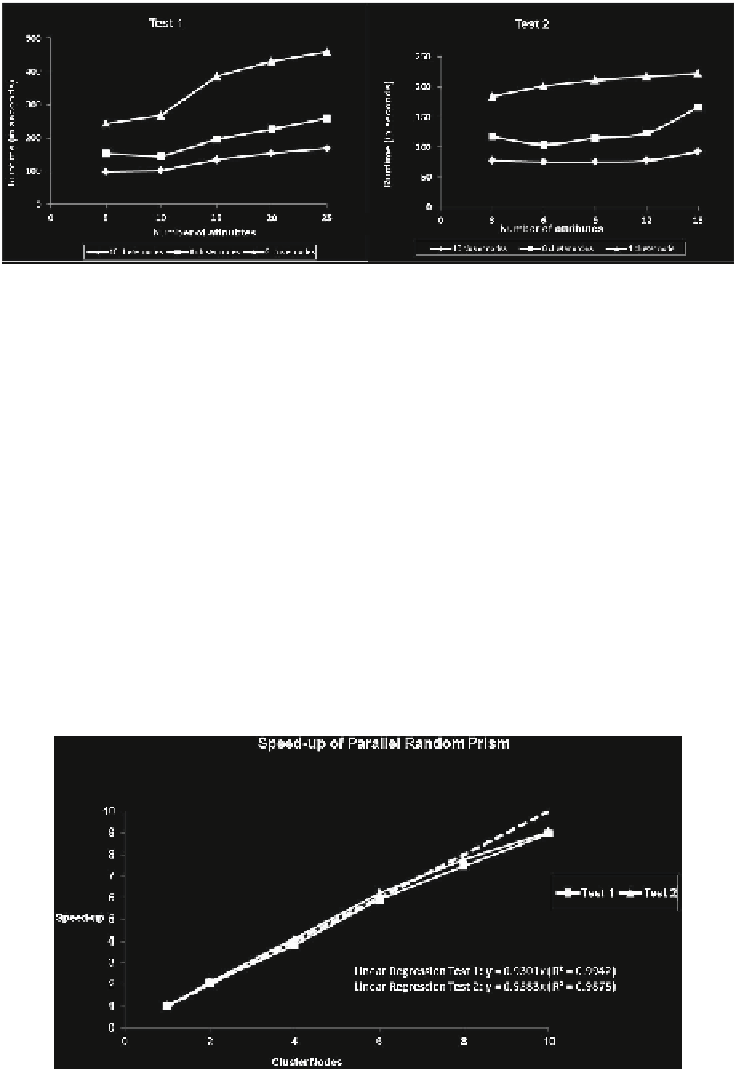Database Reference
In-Depth Information
Fig. 5.
Size up behaviour of Parallel Random Prism with respect to the number of
features. Headings Test 1 and Test 2 refer to the test datasets in Table
1
. These datasets
have in this case been appended to themselves in order to increase the number of
attributes, while keeping the concept stable.
displayed in Fig.
6
. The theoretical ideal speed-up factors are plotted as a dashed
line. It can be seen that the speed-up factors achieved are very close to the ideal
linear case. This almost ideal speed-up has been verified by linear regression
equations also depicted in Fig.
6
. There is a small discrepancy between the ideal
case and the actual speed-up factors, the more cluster nodes are used. However,
this discrepancy is expected and can be explained by the non parallel part of
Parallel Random Prism as mentioned in the previous section, which is the term
i
=1
T
asm,i
and the communication overhead, which is
in the equa-
tion for the speed-up of Parallel Random Prism. It is expected that there will be
an upper limit of the number of cluster nodes that are beneficial to reducing the
T
comdat
· p
Fig. 6.
The Speed-up factors for of Parallel Random Prism. The dashed line represents
the theoretical ideal speedup. Linear regression equations and
R
2
are displayed for the
two test cases.

Search WWH ::

Custom Search